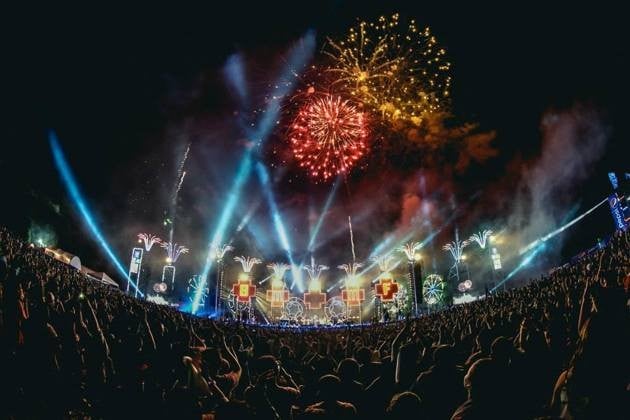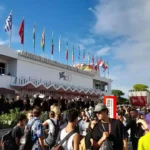Festivals have been an integral part of human culture for centuries, celebrating everything from religious traditions to cultural milestones and artistic achievements. However, as the world enters the digital age, traditional festivals are undergoing a dramatic transformation. Digital technology is influencing how festivals are organized, experienced, and shared, creating new opportunities and challenges in the process. From virtual events to social media engagement, digital tools are reshaping every aspect of festivals, bringing them to broader audiences, enhancing participant interaction, and even creating entirely new types of festivals.
In this article, we will explore how modern festivals are evolving in the digital age, examining the role of technology in their development, the impact of digital platforms, and the ways in which festivals are adapting to the ever-changing digital landscape.
The Digital Transformation of Festivals
1. Virtual and Hybrid Festivals
One of the most significant changes in modern festivals is the shift to virtual and hybrid formats. These formats gained prominence during the COVID-19 pandemic when large gatherings were restricted, but they have continued to thrive even as in-person events return. Virtual festivals allow people to attend and participate in festivals without needing to be physically present, opening up the event to a global audience. From music festivals to film screenings, virtual festivals leverage streaming platforms, social media, and interactive tools to bring the experience to people’s devices.
Hybrid festivals, which combine both physical and virtual elements, are also on the rise. This model allows attendees to choose whether they want to participate in person or virtually, making festivals more accessible and inclusive. For instance, a music festival might offer live performances at the venue while streaming the concert to viewers worldwide. This hybrid model caters to a diverse range of participants and breaks down the traditional geographical and logistical barriers.
Example: The renowned Coachella music festival, for instance, has streamed performances online for several years, expanding its reach to millions of viewers who cannot attend the festival in person.
2. Social Media Engagement
Social media platforms like Instagram, TikTok, Twitter, and Facebook have become essential tools for promoting and sharing festival experiences. In the digital age, social media allows festival organizers and attendees to build communities, share live updates, and generate buzz. These platforms enable real-time communication and interaction during the event, where attendees can share photos, videos, and experiences instantly with friends, followers, and fans.
Hashtags, live streaming, and user-generated content play significant roles in engaging audiences and amplifying the festival experience. The accessibility of social media allows festivals to reach audiences beyond their immediate physical location, tapping into a global community of festival-goers.
Example: The #Glastonbury hashtag on Instagram and Twitter has amassed millions of posts, with fans sharing their experiences and performances. This provides a way for festival organizers to reach a wider audience and for attendees to feel part of a larger global community.
3. Enhanced Interactive Experiences with Augmented Reality (AR) and Virtual Reality (VR)
Technology is transforming the way attendees experience festivals, particularly through the use of augmented reality (AR) and virtual reality (VR). These technologies create immersive experiences that enhance the festival environment, offering participants the ability to engage in ways that were once unimaginable.
AR is being used to create interactive exhibits, art installations, and digital scavenger hunts, allowing attendees to interact with their environment in new ways. VR, on the other hand, can transport individuals to entirely new worlds. Many music festivals have already experimented with VR to stream performances in 360-degree views, giving remote attendees a front-row experience.
For instance, the “Tomorrowland” music festival has experimented with both AR and VR to bring immersive digital experiences to those who can’t attend the festival physically. Through VR, users can enjoy the festival from their homes, experiencing it in a three-dimensional space that feels like being there.
4. Smart Technologies for Seamless Festival Management
The digital age has also brought innovations in festival management, particularly through the use of smart technologies. Mobile apps are now an essential part of festival experiences, offering features like event schedules, venue maps, ticketing, and real-time updates. Attendees can use apps to navigate large festivals, find their friends, and track live performances.
Moreover, RFID (Radio Frequency Identification) wristbands are becoming increasingly common, allowing festival-goers to enter the event, make cashless transactions, and even track their movement for security purposes. These technologies enhance the attendee experience by reducing friction and making the festival more convenient and safer.
Additionally, festival organizers now rely on big data analytics to improve planning and logistics. Data collected from ticket sales, attendee behaviors, and engagement trends help organizers fine-tune event schedules, marketing efforts, and crowd management strategies.
5. Sustainability and Eco-Friendly Solutions
As the global community becomes more aware of environmental issues, festivals are increasingly adopting digital solutions to become more sustainable. Digital ticketing reduces the need for paper and physical passes, while apps allow for better crowd control, reducing the environmental impact of large gatherings. Additionally, digital promotions and marketing campaigns help to reduce the amount of printed materials that festivals traditionally rely on.
Some festivals have even used technology to promote sustainability directly. For example, apps can provide real-time data on waste management, recycling points, and eco-friendly practices. Digital platforms allow attendees to access information about sustainable practices and be more conscious of their environmental impact.
6. Global Reach and Inclusivity
Digital platforms allow festivals to break free from geographic limitations, creating truly global events. International festivals can now broadcast performances or sessions in real-time, allowing people from different continents to participate in ways that were once impossible. This global reach also leads to greater inclusivity, as people with disabilities or mobility issues can now enjoy festivals without worrying about physical barriers.
Virtual and hybrid events have made festivals more accessible to people who otherwise might not be able to attend due to factors like distance, cost, or physical limitations. Digital participation offers a more equitable way for all people to experience the joy and community that festivals bring.
7. The Rise of NFT-based Festivals
In the digital age, new innovations are also shaping the future of festivals, such as the rise of Non-Fungible Tokens (NFTs). NFTs are unique digital assets verified using blockchain technology, and they are becoming increasingly popular in the world of art, music, and entertainment. Many festivals are now exploring NFTs as a way to offer exclusive experiences, access, and collectibles to participants.
NFTs allow for personalized festival experiences, such as exclusive access to virtual performances, artist collaborations, or behind-the-scenes content. Additionally, NFT collectibles can serve as digital memorabilia, allowing festival-goers to own unique pieces of festival history.
Example: The virtual music festival “Decentraland” uses NFTs to allow users to purchase digital festival tickets, avatars, and even festival-themed virtual real estate, enabling attendees to have an immersive experience in the metaverse.
7 FAQs on the Evolution of Modern Festivals in the Digital Age
1. What are hybrid festivals? Hybrid festivals combine both physical and virtual elements, allowing attendees to participate in person or digitally, depending on their preference and location.
2. How are virtual festivals different from traditional ones? Virtual festivals are entirely online and allow attendees to watch performances or engage in activities through live-streaming platforms, while traditional festivals take place in physical venues.
3. Can technology enhance the experience of attending a festival? Yes, technologies such as augmented reality (AR), virtual reality (VR), and mobile apps can create immersive and interactive experiences, enhancing how attendees experience and engage with festivals.
4. How do social media platforms influence modern festivals? Social media platforms help build communities, promote festivals, and engage with attendees in real time. They allow users to share their experiences, creating a sense of connection and expanding the festival’s reach.
5. Are festivals becoming more sustainable due to digital tools? Yes, digital tools like digital ticketing, mobile apps, and online promotions help reduce the environmental impact of festivals by cutting down on waste, printed materials, and transportation needs.
6. Can anyone participate in a digital or virtual festival? Yes, digital festivals are designed to be inclusive, allowing anyone with an internet connection to participate, regardless of their geographic location or ability to attend in person.
7. How are NFTs changing the festival experience? NFTs offer unique digital assets like exclusive tickets, digital memorabilia, or access to private experiences, adding new dimensions to the festival experience and creating opportunities for fans to interact with their favorite artists and events.
Conclusion
The digital age has brought significant changes to how modern festivals are organized, experienced, and shared. From virtual and hybrid events to the use of social media, augmented reality, and NFTs, technology is creating new opportunities for both festival organizers and attendees. Digital tools allow festivals to reach a wider and more diverse audience, enhance the attendee experience, promote sustainability, and ensure that festivals remain accessible and inclusive for all.
As festivals continue to evolve in the digital age, they will increasingly reflect the technological advancements and cultural shifts shaping the world. The future of festivals will likely see even more immersive, interactive, and global experiences, opening up new ways for people to connect, celebrate, and share in cultural moments together.
Key Takeaways
- Virtual and Hybrid Festivals: Technology allows for the creation of virtual and hybrid festivals, offering participants the option to attend in person or remotely.
- Social Media: Social media platforms play a crucial role in expanding the reach of festivals, fostering global communities and real-time engagement.
- Immersive Experiences: Technologies such as AR and VR are enhancing festival experiences, allowing participants to engage in interactive and immersive environments.
- Sustainability: Digital tools help festivals reduce their environmental impact by minimizing waste and encouraging eco-friendly practices.
- NFTs and the Metaverse: NFTs are reshaping the festival experience by offering exclusive access, digital collectibles, and immersive virtual experiences.




